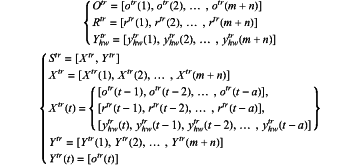| CPC G06Q 10/06315 (2013.01) [G06N 7/08 (2013.01); G06N 20/00 (2019.01); G06Q 10/04 (2013.01); G06Q 50/06 (2013.01)] | 20 Claims |

|
1. A method for predicting building energy consumption based on a Holt-Winters and an extreme learning machine, comprising:
constructing, by a system for predicting building energy consumption, a building simulation model based on actual operation parameters of a building to obtain an original energy consumption data set of the building, wherein the system comprises a processor and a memory storing a trained Holt-Winters model and a trained extreme learning machine model;
decomposing, by the system, the original energy consumption data set to obtain a linear energy consumption data set and a nonlinear energy consumption data set;
performing prediction on the linear energy consumption data set by using the trained Holt-Winters model in the system to obtain a linear energy consumption prediction result; and
inputting the nonlinear energy consumption data set, the original energy consumption data set, and the linear energy consumption prediction result into the trained extreme learning machine model in the system to output by the system a building energy consumption prediction value of the building simulation model, comprising:
constructing a nonlinear prediction model of the extreme learning machine based on the nonlinear energy consumption data set, the original energy consumption data set, and the linear energy consumption prediction result:
 wherein Otr is a historical data set for training, Rtr is a nonlinear data set for training, yhwtr is a linear prediction result set for training, m+n is a size of a training set for the nonlinear prediction model, Str is the training set for the nonlinear prediction model, Xtr is an input to the nonlinear prediction model, Ytr is an output from the nonlinear prediction model, and a is a number of feedbacks of an input feature of the nonlinear prediction model, and m is a size of the linear prediction training set.
|